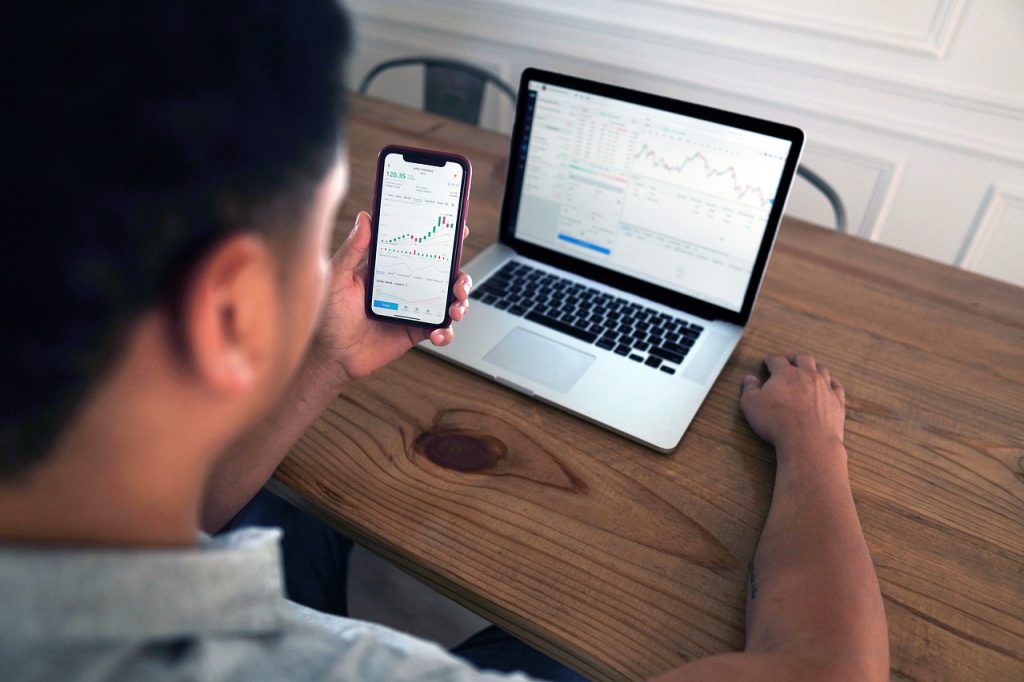The shoulders and head chart pattern is an easily noticeable and popular technical analysis pattern. It demonstrates a baseline and features three peaks, with the middle one being the topmost. This chart illustrates a bullish to bearish reversal trend and indicates the possible end of an upward trend.
The pattern emerges on each timeframe and can be utilized by different types of investors and traders. Some of the components that facilitate implementing the shoulders and head pattern include price targets, stop levels, and entry levels. This chart pattern offers crucial and noticeable levels. This article covers some of the things traders should know about the shoulders and head pattern chart.
How to Identify Inverse Shoulders and Head Patterns
Many traders use the inverse shoulders and head pattern as an indicator. The pattern is affiliated with a downward reversal price trend and is one of the most popular reversal signals.
As price drops, it strikes a low point, also known as a trough, before embarking on recovery and upward swing. Market resistance then drives it further down through a different trough. The price continues dropping until the market can no longer sustain lower prices before it starts rising again.
Market resistance again forces the price back down, forcing it to drop one final time. If the market is incapable of sustaining a lower price, it will not strike the previous low. This process triggers a higher low before another price rise occurs.
That movement generates three low points or troughs: the right shoulder, head, and left shoulder. Two pullbacks or rallies will appear in this pattern. While one appears after the head, the other will appear after the left shoulder. These pullbacks high point’s link with a trendline that stretches to the right, forming a trendline referred to as the resistance line or neckline.
How to Trade the Inverse Shoulders and Head Pattern
The inverse shoulders and head become a bottoming pattern on completion. As a result, traders should strive to purchase or assume long positions based on the stock. The pattern ends once the asset’s price rises above the pattern’s resistance line or surpasses the neckline.
Usually, traders can trade the inverse shoulders and head pattern by entering a prolonged position once the price surpasses the neckline. A trader may consider activating a stop-loss order underneath the right shoulder’s low level.
The neckline operates efficiently as an entry point when the two retracements in the pattern arrive at similar levels or when the second retracement drops lower than the previous one. Assuming the right shoulder rises higher than the initial one, the trendlines will move upwards, denying it the opportunity to offer an excellent entry point. Here, a trader will need to enter long or buy when the price surpasses the second retracement high.
Why are the Shoulders and Head Pattern Effective?
It is worth mentioning that there is neither a perfect pattern nor one that always operates effectively. However, there are numerous reasons why you would want to leverage the shoulders-to-head chart pattern, as we shall see below. While these reasons are based on the peak price, they can also apply for price drops.
- As price drops from the head (market high), sellers have already penetrated the market, reducing aggressive buying.
- The stopover on the right shoulder is consistent, seeing that the trend will have moved downwards. The right shoulder is slightly lower compared to the head. As a result, the right shoulder will only be broken once an uptrend restarts.
- As the resistance line approaches, many people that purchased during the rally or in the closing wave higher on the right shoulder will have been proven wrong and may risk losses. This big group will leave positions, pushing the price close to the profit level.
- The profit target assumes that traders who bought the security during an uncertain time will have to leave their positions, triggering a reversal similar to the previous peak price pattern.
- Monitoring volume is also possible. During inverse shoulders and head patterns, traders expect volume expansion during a breakout. Such expectations demonstrate a rising buying interest that could push prices towards the target. Dropping volume signifies disinterest in the upside move, warranting some skepticism.
- The neckline is where numerous traders are going through pain and could leave their positions unexpectedly, driving the price towards the expected target.
Finally
Shoulders and head patterns appear on each time frame and are visual. The pattern comprises a right shoulder, head, and left shoulder. While the system is not perfect, it provides a market trading method based on relevant price movements.

